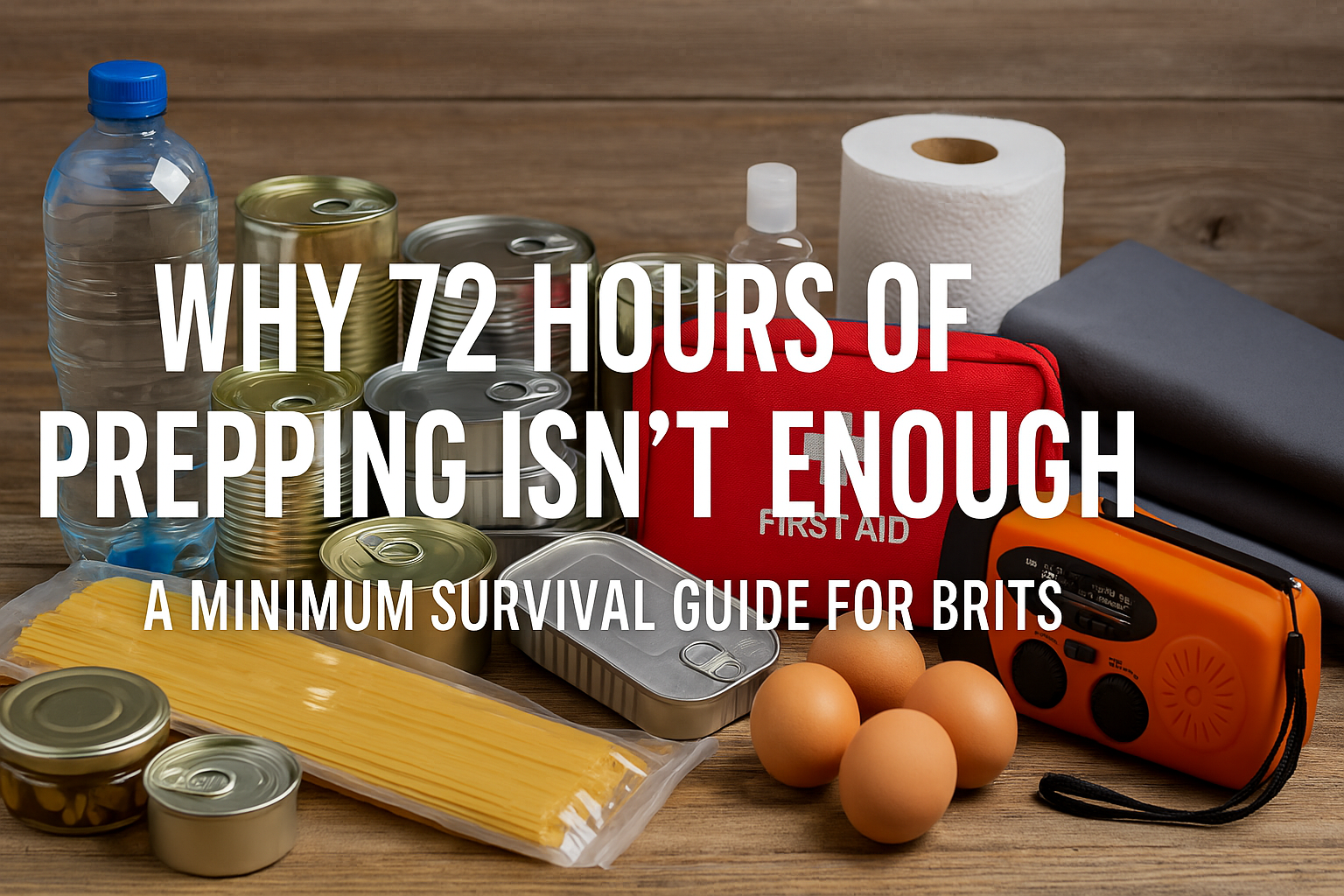This is the third part of a three part article sharing with you my experiences with square foot farming… well its not really farming but it involves both gardening and animal husbandry so it may as well be. In part one, I explained some of my experiences with gardening in small spaces… in part two, I shared some of my experiences with raising chickens for eggs… in this part, I will share with you some of experiences with raising rabbits for resale and for meat. This is not a comprehensive article… it covers some of my experiences with raising rabbits for meat and resale… you will need to do some more research but this is a great place to start and lets you know who easy it can be.
Rabbits are almost as easy to keep as chickens. However, the laws regarding them may get a bit more 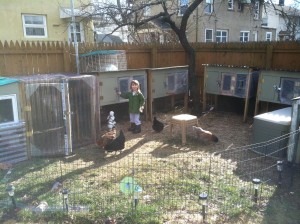 tricky, especially if you have a colony large enough to keep you fed with meat. Luckily, most people or governing bodies don’t regard rabbits as livestock so a few in hutches in your yard shouldn’t raise any eyebrows (but a shed full of cages may). Rabbit meat has a bad name, so to speak, because it is a lean meat and people can “starve” even though they eat rabbit meat daily. These people don’t really starve, but they do have adverse health effects because the fats and minerals a body needs to function properly just aren’t present in rabbit meat…. but it is a great source of protein as long as it is part of a diverse, balanced diet.
tricky, especially if you have a colony large enough to keep you fed with meat. Luckily, most people or governing bodies don’t regard rabbits as livestock so a few in hutches in your yard shouldn’t raise any eyebrows (but a shed full of cages may). Rabbit meat has a bad name, so to speak, because it is a lean meat and people can “starve” even though they eat rabbit meat daily. These people don’t really starve, but they do have adverse health effects because the fats and minerals a body needs to function properly just aren’t present in rabbit meat…. but it is a great source of protein as long as it is part of a diverse, balanced diet.
Rabbits breed… well, like rabbits. An adult female (doe) can have several litters of baby bunnies per year (strictly speaking, they can breed again as soon as they give birth) and litters can be large (I have had 12 more than once). For argument sake, lets say that a doe can safely have 5 litters per year (allows for 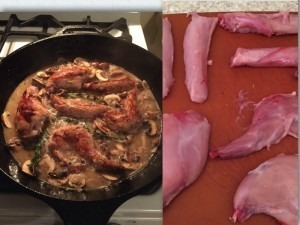 gestation and weaning) and 8 from each litter make it to maturity (with 8 nipples thats a fair average… but Ive had females that successfully raised 11)… that adds up to a lot of bunnies which in turn adds up to a lot of meat if youre raising them for the table. If you’re looking to build a colony of breeders, does will reach sexual maturity from around 6 months to 9 months old depending on the breed. Both bucks and does will reach their full size within a year. I keep medium size rabbits (5–8 pound range) because they grow faster than the giant breeds and produce more meat than the dwarf breeds. If you’re looking to be a pure breed breeder, look at New Zealands or Rexs…. both are known for excellent meat and fur production. Don’t expect to get rich selling baby rabbits, even pure breeds… the demand isn’t very high and the selling price will probably be under $50 per bunny. As a small, backyard grower the best you can hope for is to break even with your expenses. I raise some for sale and any that don’t sell are destined for the pot. Butchering is quite easy but I warn you not to get too attached to your animals or the butchering process will be difficult… emotionally, not physically.
gestation and weaning) and 8 from each litter make it to maturity (with 8 nipples thats a fair average… but Ive had females that successfully raised 11)… that adds up to a lot of bunnies which in turn adds up to a lot of meat if youre raising them for the table. If you’re looking to build a colony of breeders, does will reach sexual maturity from around 6 months to 9 months old depending on the breed. Both bucks and does will reach their full size within a year. I keep medium size rabbits (5–8 pound range) because they grow faster than the giant breeds and produce more meat than the dwarf breeds. If you’re looking to be a pure breed breeder, look at New Zealands or Rexs…. both are known for excellent meat and fur production. Don’t expect to get rich selling baby rabbits, even pure breeds… the demand isn’t very high and the selling price will probably be under $50 per bunny. As a small, backyard grower the best you can hope for is to break even with your expenses. I raise some for sale and any that don’t sell are destined for the pot. Butchering is quite easy but I warn you not to get too attached to your animals or the butchering process will be difficult… emotionally, not physically.
Commercial rabbit cages tend to be small… and store bought hutches aren’t much better. I own several store bought cages but use them for transportation only, I built my hutches from my own design for about 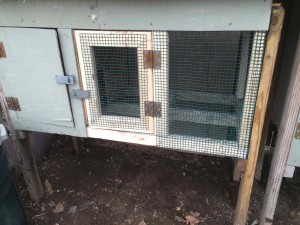 $150; thats about $100 cheaper than something comparable and a much better constructed hutch than something like this. The theory behind the hutch in the link is great but it has a few problems…if you plan on buying a hutch which has access to the ground, expect your rabbits to get free (the live in holes underground naturally)… also, expect the inside to chewed up and weaker/narrower wood will be chewed through. Whatever you decide to use, make sure your hutches/cages have enough room for the rabbit to move around and exercise, proper cover from the sun (rabbits overheat quickly on warm days), allow for waste drainage, and are protected from predators… and never use pressure treated lumber in a hutch since rabbits are voracious wood chewers. Using puppy cages (like this), I let my rabbits out of their hutches when Im outside working… it gives them exercise and allows them to nibble on grass but I wont leave them unattended for safety reasons.
$150; thats about $100 cheaper than something comparable and a much better constructed hutch than something like this. The theory behind the hutch in the link is great but it has a few problems…if you plan on buying a hutch which has access to the ground, expect your rabbits to get free (the live in holes underground naturally)… also, expect the inside to chewed up and weaker/narrower wood will be chewed through. Whatever you decide to use, make sure your hutches/cages have enough room for the rabbit to move around and exercise, proper cover from the sun (rabbits overheat quickly on warm days), allow for waste drainage, and are protected from predators… and never use pressure treated lumber in a hutch since rabbits are voracious wood chewers. Using puppy cages (like this), I let my rabbits out of their hutches when Im outside working… it gives them exercise and allows them to nibble on grass but I wont leave them unattended for safety reasons.
My rabbits eat primarily hay and bagged food… but they do best on hay. Rabbits have a slightly sensitive digestive system so be wary of giving treats such as bread and even some vegetables. Examples: greens can be too rich for young bunnies and corn can be toxic at any age, both can result in death. Hay and bagged food are best bets for a healthy rabbit but mine get small amounts of vegetable table scraps. I also allow a 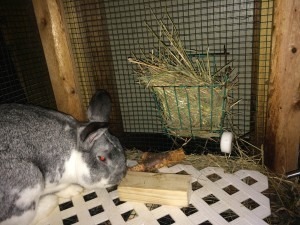 certain part of my lawn to grow long and full of dandelions for the rabbits benefit. Using garden shears, I cut clumps of grass or pull up dandelions and feed it to them in their hutches… or allow them exercise time in puppy cages in the longer grass. The fall is a great time of year for my rabbits since the bruised fruit from my peach, apple, and pear trees goes to them. Rabbits need to be fed the proper amount daily, anything more and they will overeat and get fat. Ration food so that they eat just about all the food in their hay rack and pellet bowl in a day…with the exception of growing bunnies and pregnant/lactating mothers (they should be fed as much as they want).
certain part of my lawn to grow long and full of dandelions for the rabbits benefit. Using garden shears, I cut clumps of grass or pull up dandelions and feed it to them in their hutches… or allow them exercise time in puppy cages in the longer grass. The fall is a great time of year for my rabbits since the bruised fruit from my peach, apple, and pear trees goes to them. Rabbits need to be fed the proper amount daily, anything more and they will overeat and get fat. Ration food so that they eat just about all the food in their hay rack and pellet bowl in a day…with the exception of growing bunnies and pregnant/lactating mothers (they should be fed as much as they want).
Since you will be feeding and watering them daily, make it a point to handle them daily. Rabbits as a rule don’t like to be handled and they wont ever really like to cuddle… but handling them frequently makes  them easier to handle for moving around or for slaughter. Handling them often allows for inspection of coat, eyes, ears, etc. Ive had rabbits with digestive problems, ear cankers, and a mystery illnesses that I never quite figured out, early diagnosis can save a rabbits life and avoid spreading to other rabbits in the colony. Keeping a clean hutch/cage can help keep rabbits healthy also. I hose my hutches out a few times a year (after removing the rabbits ofcourse) to remove any shed fur, manure, or food scraps from the wire… rabbit urine is especially pungent as well so hosing is almost a must. I also rake/shovel any dropped food and manure monthly (or before it starts to smell). Composting it and adding to my garden has made for great soil.
them easier to handle for moving around or for slaughter. Handling them often allows for inspection of coat, eyes, ears, etc. Ive had rabbits with digestive problems, ear cankers, and a mystery illnesses that I never quite figured out, early diagnosis can save a rabbits life and avoid spreading to other rabbits in the colony. Keeping a clean hutch/cage can help keep rabbits healthy also. I hose my hutches out a few times a year (after removing the rabbits ofcourse) to remove any shed fur, manure, or food scraps from the wire… rabbit urine is especially pungent as well so hosing is almost a must. I also rake/shovel any dropped food and manure monthly (or before it starts to smell). Composting it and adding to my garden has made for great soil.
Don’t limit the amount of water your rabbits have access too and change it daily (twice a day if it freezes). I keep two water bottles per rabbit on hand in the winter… I put in a fresh one in the morning and another as soon as I get home from work, chances are the water has frozen within a few hours. I bought most of my hay racks, waterers, and feed troughs at tractor supply but here are links to a few links if you don’t have one nearby. Also, Ive included some links to books you will find of interest if you’re getting into rabbits or chickens. While much of the information you will need can be found through open sources on the internet, these books have most of what you will need and having a library of such books is a good idea as an animal grower (Vet Book and Storeys Rabbit Book). Feel free to ask questions in the comments and Ill do my best to answer them from my experiences.






